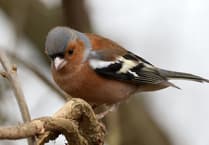
It’s often not enough to describe the colour of something simply as “red”, “blue” or “green”. How do you define the discrete hues of a flower or a leaf, or the distinctive colours in a company’s logo, on a food packet, or the garish front door at number 27?
I’ve often thought, asked how much milk I’d like in my tea, that it would be useful to have a colour card on hand: “Just match this shade, please!”
Most organisations nowadays, from small charities to international brands, define exact colours to be used on product packaging and logos. Countries, too, need to define the exact colours used in emblems, literature and national flags.
One standard is the Pantone® Colour Matching System, owned by a US company which sells swatches and charts of over 2,000 colours, defined by names and numbers. Using these, manufacturers in different locations all over the world can all refer to specific Pantone descriptions to ensure colours match.
The use of Pantone has not been a smooth road. Can a company “own” a colour or distinctive hue? There have been arguments over Pantone’s claims to intellectual property rights over its system, notably with the Adobe company.
There’s also a colour matching system in the horticultural world. The Royal Horticultural Society (RHS), headquartered at Wisley, developed the RHS Colour Chart.
With its 920 colours, the RHS Colour Chart serves horticulturists’ need to record the colour of plants, as slight variations in colour are significant in distinguishing between different varieties or cultivars. The use of the colour chart also ensures that planting colour schemes are more effective and aesthetic.
Since 2000, the Pantone Colour Institute has declared a particular "Colour of the Year" which, for 2025, is “Mocha Mousse”. It says that, with warm, earthy hues, Mocha Mousse “inspires us to curate experiences that boost personal comfort and wellness”.
Just fancy words? We were interested to discover plants that the RHS believes match Mocha Mousse. It made five suggestions.
Firstly, Digitalis parviflora “Milk Chocolate” is a foxglove with silvery-green foliage that provides “a subtle pop of colour for any garden operating with a cosier palette”.
The second is Geum “Lisanne”. Its perennial flowers have a rich, sun-like bloom, beautifully complemented by its calyx of Mocha Mousse as it flowers throughout spring and summer.
Next, Acer saccharinum is a tree that can exceed 12m. The subtle touch of Mocha Mousse can be seen tucked between the reds and yellows of this maple’s autumn foliage and bark.
Carex Milk Chocolate (“Milchoc” PBR) is a small hummock-forming sedge “whose grass-like leaves glow with pale chocolate notes resembling Mocha Mousse throughout the year”.
Finally, Miscanthus sinensis “Septemberrot” is a tall-growing elegant grass with emerald, green blade-like leaves. Flowering in September, its airy flowers develop autumn tints “perfectly matching Pantone’s Mocha Mousse, held above and complementing its rich, red orange autumn foliage”.
The RHS tells us the use of its RHS Colour Chart extends beyond horticulture: due to its precise colour representation, it has been used for colour quality control by food and fabric manufacturers, as well as in the fashion and interior design industry, including ice cream brands and in the manufacture of glass eyes.
The sixth edition of the RHS Colour Chart is available for purchase from the RHS. For details visit www.rhs.org.uk/shop
Now, yes, I’d like another cup of tea please, dark brown, matching Pantone® 4625C!





Comments
This article has no comments yet. Be the first to leave a comment.